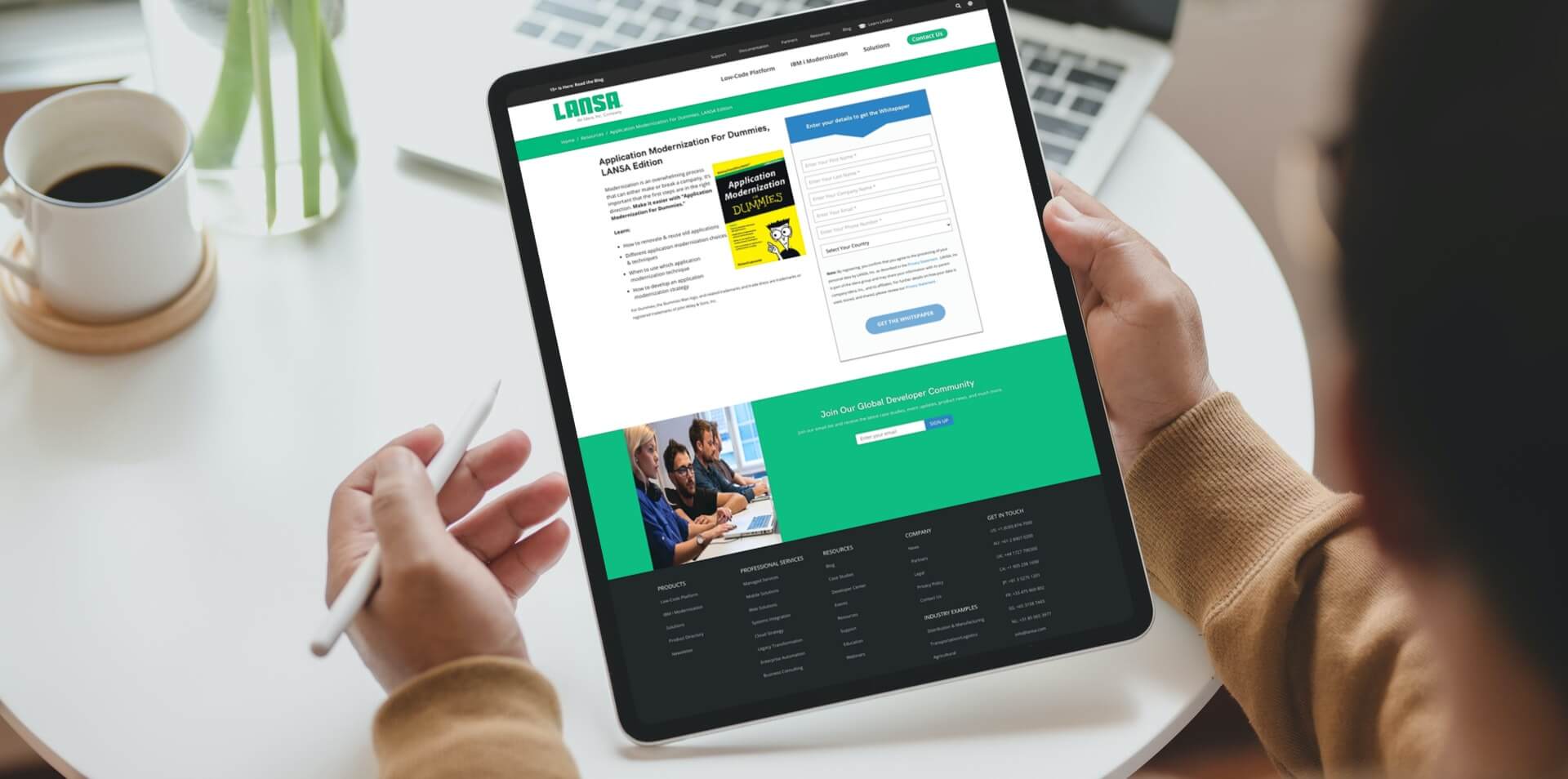We’re currently seeing a huge fundamental shift in how we build enterprise business applications — rapidly changing industry and market conditions are forcing organizations to seek solutions to the reality of changing workforces, increasing demand for new applications, and the current state of the economy. According to a Pew Research Center analysis, 35% of the current US workforce are millennials. Moreover, the study projects that by 2025, the global workforce will be 75% millennials. What does this mean for you and your low-code platform? Millennials are used to high-level digital experiences in their day-to-day lives. Because they constitute an ever-growing percentage of the global workforce, meeting their demands and expectations is non-negotiable. This means cloud, mobile, AI, and web-enabled systems, amongst other things, are a must.
The need to meet these demands, combined with worldwide digital transformation initiatives, is driving an unprecedented increase in the demand for new applications. According to IDC’s IT predictions, over 500 million applications and digital services will be developed by 2023. This number greatly exceeds that of the last forty years combined. What’s more, Gartner predicts the demand for mobile apps to grow five times faster than a typical IT department can handle. On top of all this is the sudden economic crisis due to the Covid-19 pandemic. In fact, the world bank says this could be the worst economic recession since World War II. In general, this means you must find ways to get more results out of what you already have. This is where low-code development comes in. Great low-code platforms allow you to leverage your existing skills, tools, and developers to address your digital needs.
The real question here is, however, how do you get the most out of your low-code platform? To achieve this, you must ensure your platform answers the following:
What client platforms should a good low-code solution support?
In an ever-inclusive world, it is imperative that you leverage a platform that supports, at least, web, Android, IOS, and Windows clients. This way, you can provide your team, or employees access to business solutions whenever and wherever. LANSA offers support for IOS, Android, and Windows 10/8.1, with tools for user interface design, business logic, and database access. In the case of mobile web applications, the browser manages the user interface. The app can also access mobile device features for hybrid applications, including the camera, location services, and offline storage. The mobile web and hybrid applications can run on smartphones, tablets, laptop and desktop devices from the same application code
What server platforms should a good low-code solution support?
Changing server platforms or databases can be extremely disruptive. With LANSA’s built-in cross-platform capabilities, you can migrate your applications between any hybrid-mix of Cloud and on-premise Windows, Linux, or IBM i platforms with little or no code modification. Better yet, since LANSA eliminates database and platform lock-in, you have full control over the many elements of risk so you can stabilize your technology architecture.
Let’s look at how the AS400 can offer reliability and fast transaction speeds in this article about AS400 IBMi.
Should a low-code solution have a good WYSIWYG editor?
If you require speed, efficiency, and productivity, leveraging a low-code platform with a good WYSIWYG editor is imperative. This way, you can empower your employees to deliver business solutions faster. LANSA’s low-code development platform instantly transforms everyone into a full-stack developer, meaning every developer on your team can work on any part of an application. Visual LANSA contains a full-stack language, WYSIWYG designer, and one-click deployment for all form factors.
Can a good low-code solution also offer modernization?
Modernization, at its core, involves taking a holistic approach to improving the architecture, infrastructure, and delivery of existing legacy platforms. You’ll get the most out of low code modernization if your low-code platform offers the best of both worlds — in other words, language-based low-code development. This allows developers to write code in a low-code solution. It is one of the most powerful application-creation processes available to developers today. It combines the benefits of low code’s quick application creation process with the benefits of traditional programming’s ability to solve complex integrations and problems. This means your developers can be more effective and efficient. LANSA offers language-based low-code development that enables the rapid building, deployment, and operation of the apps that make your business run.
Is a low-code solution possible for eCommerce?
Looking at recent YC combinator batches, you see companies like Retool, WeWeb, and UiFlow. This shows that not only is low-code possible for eCommerce, but businesses are thriving because of low-code. To this end, LANSA offers its Commerce Edition. This is a component-based solution that allows you to choose the specific functionality you want to deploy within your B2C or B2B website as needed, with the ability to add additional functionality in the future. Tried and true, the LANSA Commerce Edition has been securely implemented over 16 different ERP systems, so integrating with packaged or customer ERP systems is straightforward.
Learn more about how your business can implement progressive low-code solutions the IBM way.
Would a low-code solution be too limited when integrating with other data and products?
Very few application development projects start with a clean slate. Most have to integrate with existing databases, legacy code, and other applications already in production. This is another area where low-code shines. LANSA’s long, multi-decade experience with real-world customer applications around the globe spans a plethora of computing platforms, databases, data formats, communication protocols, security standards, and much more. With the LANSA low-code platform, you can easily extend data from any database on any platform to the web, mobile, and desktop applications. Additionally, you can use web services and APIs to allow data to flow through your existing back-office systems and business processes.
Are You Getting the Most Out Of Your Low Code Platform?
In our pandemic-hit new economy, we cannot overestimate the importance of leveraging existing resources. Businesses are facing increasing pressure to adapt to changing market conditions, build and deploy new applications faster, and meet changing customer needs and expectations, albeit with limited budgets.
Low-code platforms offer you the luxury of using what you already have to meet your digital needs. However, you must ensure you’re getting the most results from the platform you’re leveraging. Choosing platforms that meet the criteria discussed in this article will help you make the most of your investment. As seen above, LANSA meets all of them.
Contact us for more information on how LANSA can help you make the most of your existing resources.

























